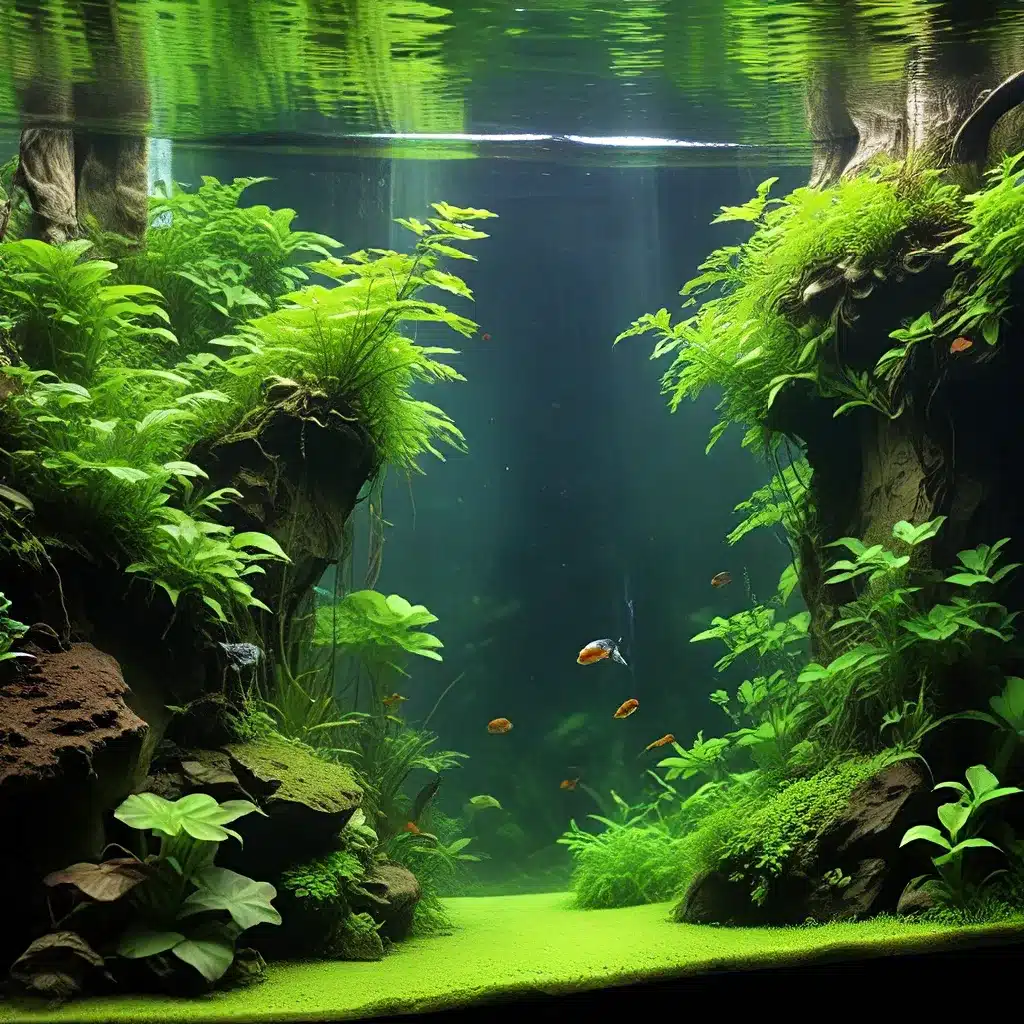
The Importance of Carbon for Aquatic Plants
Aquatic plants, like their terrestrial counterparts, require a delicate balance of essential nutrients to thrive. At the heart of this nutrient equation lies carbon, the fundamental building block of all organic molecules. In the underwater world of the planted aquarium, carbon assumes a critical role, serving as the primary fuel for the plants’ photosynthetic processes.
Photosynthesis, the remarkable process that forms the cornerstone of aquatic plant life, is entirely dependent on the availability of carbon dioxide (CO2). This gas, absorbed by the plants, is combined with water and the energy from light to produce glucose – the plants’ primary energy source. Without an adequate supply of CO2, this delicate dance of photosynthesis cannot be sustained, leading to stunted growth, pale coloration, and an overall lack of vitality in the aquarium plants.
Balancing the CO2 Equation
In a natural aquatic environment, the balance of CO2 and other vital nutrients is often in a state of equilibrium. However, the confined nature of the planted aquarium can disrupt this natural balance, with the high density of plants and the introduction of fish and other livestock consuming the available CO2 at a rapid pace. This imbalance can quickly lead to a carbon deficiency, stunting the growth and health of the aquatic plants.
Introducing Aquarium CO2 Systems
To address this challenge, many aquarists have turned to the use of aquarium CO2 systems. These ingenious setups, ranging from simple DIY solutions to more advanced pressurized systems, provide a reliable and controllable source of carbon dioxide to the planted aquarium. By carefully regulating the CO2 levels, aquarists can ensure that their aquatic plants have access to the essential nutrient they need to thrive.
Understanding Pressurized CO2 Systems
Pressurized CO2 systems are the most widely used and effective method for maintaining optimal carbon levels in planted aquariums. These systems typically consist of a CO2 cylinder, a regulator to control the gas flow, a diffuser or reactor to dissolve the CO2 into the water, and a solenoid valve to automatically turn the system on and off.
The CO2 cylinder, often filled with food-grade CO2, serves as the source of the gas. The regulator is responsible for precisely metering the flow of CO2 into the aquarium, ensuring a consistent and controlled supply. The diffuser or reactor then efficiently dissolves the CO2 into the water column, making it readily available for the plants.
To further enhance the system’s efficiency, many aquarists incorporate a pH controller that monitors the water’s pH and automatically adjusts the CO2 injection rate as needed. This level of automation helps maintain a stable and optimal CO2 concentration, maximizing the plants’ ability to perform photosynthesis.
DIY CO2 Setups
For aquarists on a budget or those seeking a more hands-on approach, DIY CO2 systems offer a cost-effective alternative. These systems typically utilize a fermentation process, where yeast and sugar are combined to produce a steady stream of CO2 gas. The gas is then directed into the aquarium using a simple tubing and diffuser setup.
While DIY CO2 systems may lack the precision of their pressurized counterparts, they can still provide a significant boost to plant growth and health. The key is to carefully monitor the CO2 production and maintain a consistent output to avoid fluctuations in the gas levels.
Achieving the Perfect CO2 Balance
Striking the right balance of CO2 in the planted aquarium is crucial for the long-term success of your underwater garden. Providing too little CO2 can lead to stunted plant growth, while excessive CO2 levels can pose a risk to the well-being of your aquatic inhabitants.
To find the sweet spot, it’s essential to closely observe your plants’ responses to the CO2 levels. Healthy, vibrant plants with robust growth and a deep green coloration are a telltale sign that the CO2 supply is adequate. On the other hand, signs of stress, such as yellowing leaves, reduced growth, or even algae blooms, may indicate a need to adjust the CO2 input.
Patience and a keen eye are the keys to perfecting the CO2 balance in your planted aquarium. Experiment with different injection rates, monitor the plants’ reactions, and make gradual adjustments until you find the optimal level that allows your aquatic oasis to thrive.
Unlocking the Full Potential of Aquatic Plants
By implementing a well-designed CO2 system in your planted aquarium, you unlock a world of possibilities for your underwater garden. Lush, vibrant plants that were once a challenge to maintain can now flourish, creating a captivating and natural-looking environment. The enhanced photosynthetic activity fueled by the additional carbon not only boosts plant growth but also contributes to a healthier, more balanced aquarium ecosystem.
As your aquatic plants thrive, you’ll witness a cascade of positive effects throughout the tank. Improved water quality, reduced algae growth, and a thriving population of fish and other aquatic inhabitants all become possible when the plants have access to the essential nutrients they need.
The journey of maintaining a successful planted aquarium is an ever-evolving process, but the rewards are well worth the effort. By understanding the critical role of carbon and mastering the use of CO2 systems, you can transform your aquarium into a lush, captivating oasis that will leave your guests in awe.

